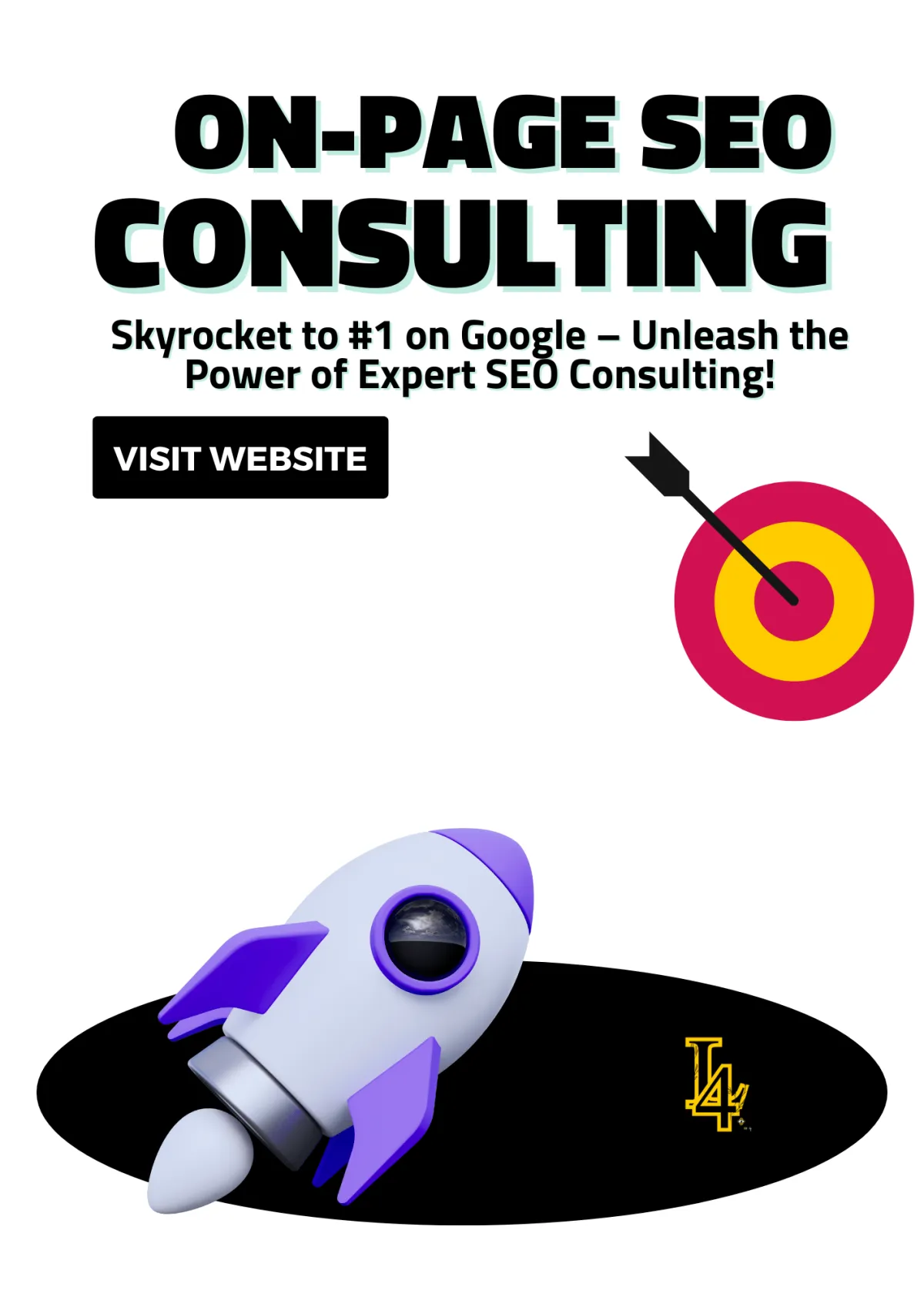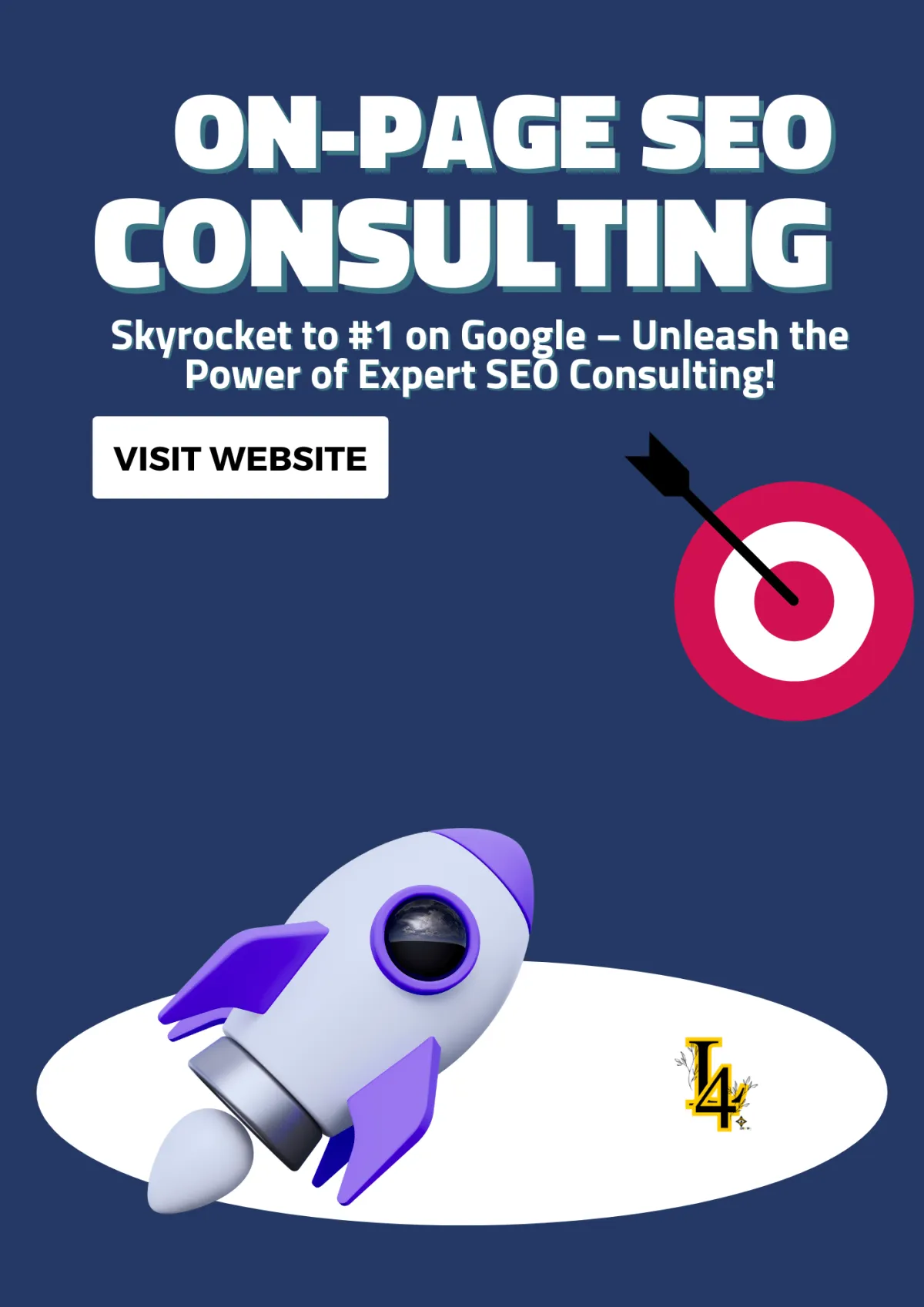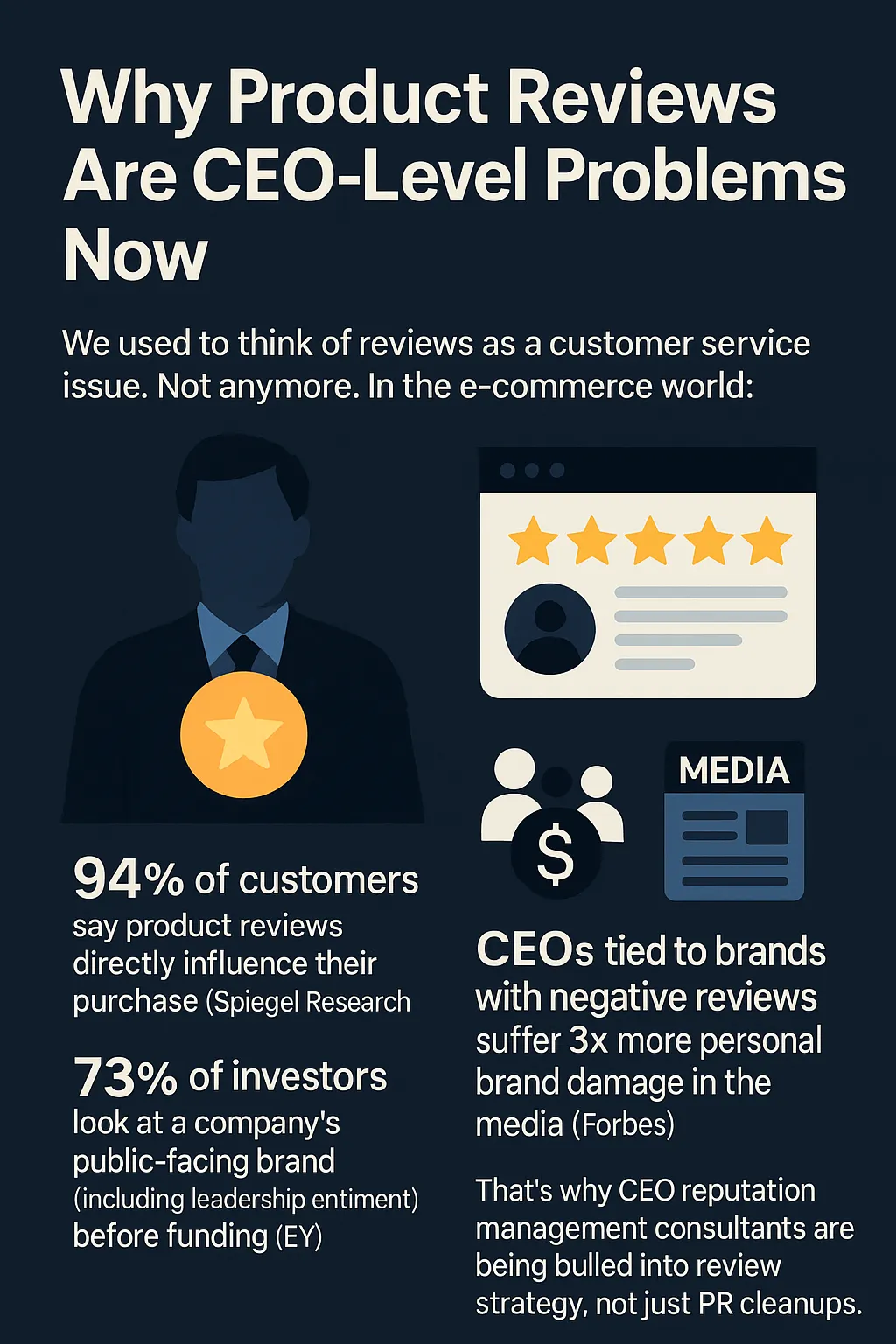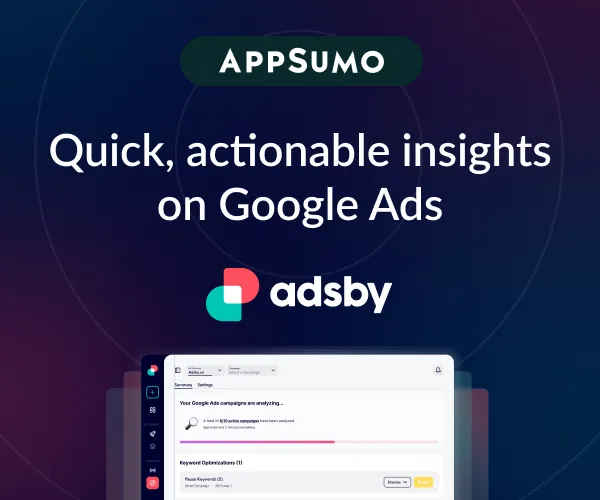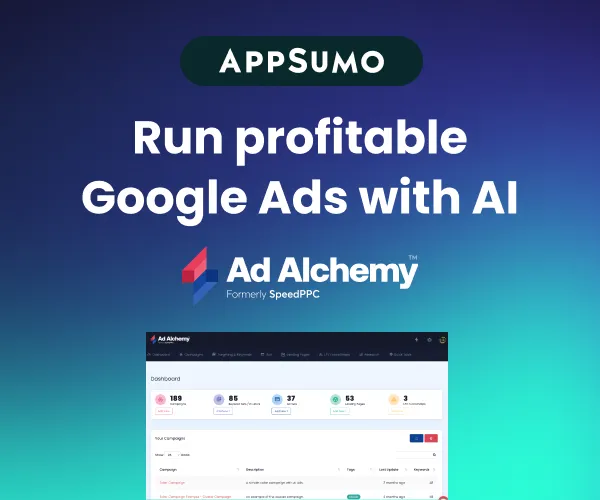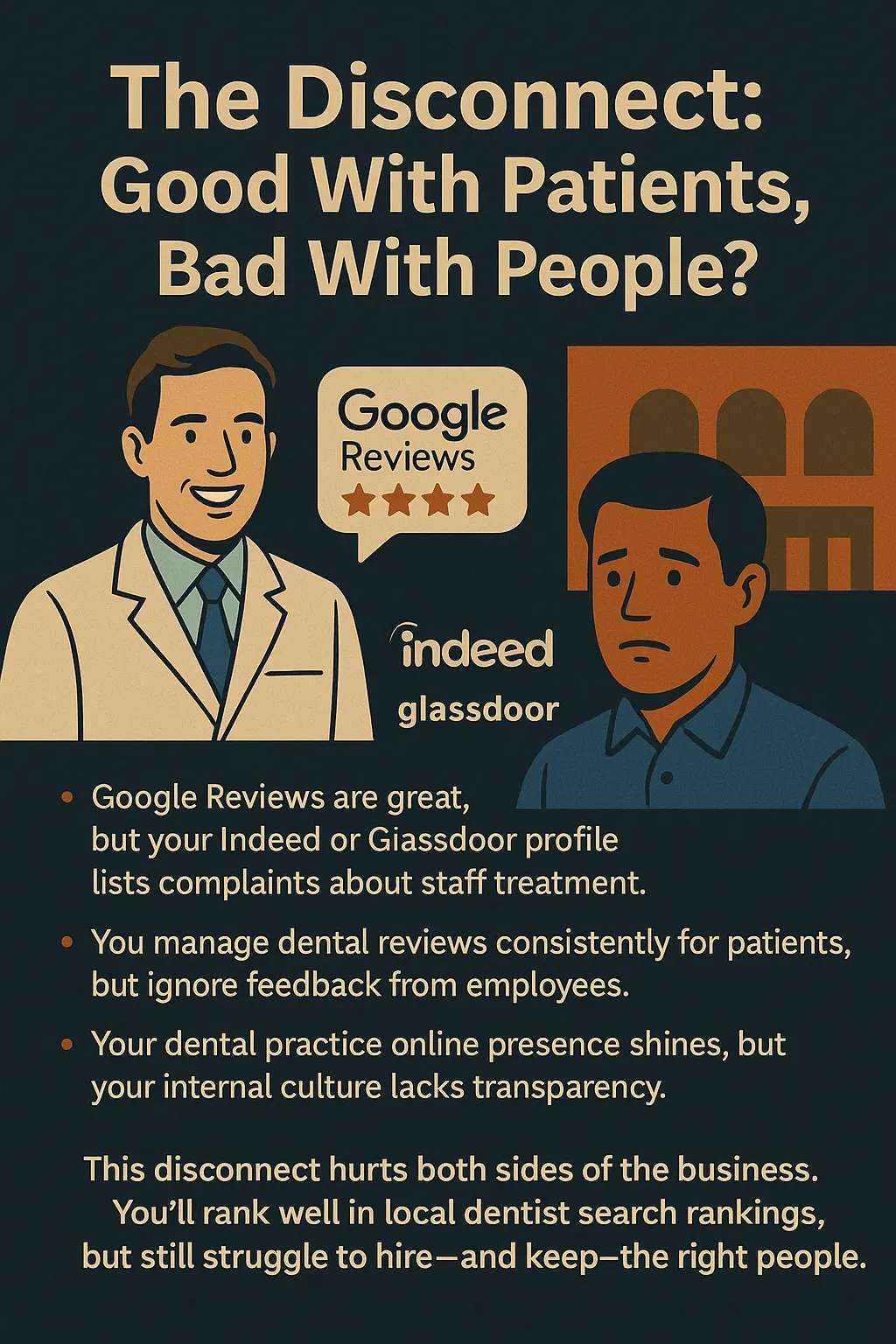
Does Alexa Still Measure Website Traffic? A Complete Update
Does Alexa Still Measure Website Traffic? A Complete Update
What Was Alexa.com and Why Was It a Big Deal? 🤔
So, Why Did Alexa.com Shut Down? 🏚️
3. Amazon Focused on Bigger Projects 🐟
The Bottom Line: Alexa Couldn’t Keep Up 🚪
Top Tools to Replace Alexa.com (The Glow-Up) 🚀
1. Google Analytics (The OG) 📊
2. SEMrush (The SEO Hustler) 🔍
3. Ahrefs (The Backlink King) 🔗
4. SimilarWeb (The Big Picture View) 🌍
5. Google Search Console (The SEO Doctor) 🩺
Bonus Tool: Ubersuggest (The Budget Baller) 💸
How I Track Website Traffic Without Alexa 🏗️
Google Analytics: My Day-One Traffic Tracker 📊
Google Search Console: My SEO Lifeline 🔍
How I Use Google Search Console:
Lookhin4 Data Metrics: My Secret Weapon 💼
How I Use Lookhin4 Data Metrics:
SEO Trends to Watch Post-Alexa 🔍
1. Voice Search Optimization 🎤
4. E-A-T: Expertise, Authoritativeness, Trustworthiness 🏆
7. Zero-Click Searches & Featured Snippets 🎯
How to Choose the Right Traffic Tool for Your Business 💡
For Small Businesses (Keep It Simple, Keep It Smart) 🏪
For Startups (Move Fast, Scale Smart) 🚀
For Bloggers and Content Creators (Traffic = Growth) ✍️
For E-commerce Sites (Track Sales, Not Just Clicks) 🛒
For Agencies and Large Businesses (Data-Driven Decisions) 🏢
How to Choose the Right Traffic Tool for Your Business 💡
For Small Businesses (Simple, Smart, and Effective) 🏪
For Startups (Move Fast, Scale Smart) 🚀
For Bloggers and Content Creators (Build Traffic, Build Influence) ✍️
For E-commerce Sites (Sales First, Always) 🛒
For Agencies and Large Businesses (All About the Data) 🏢

What Was Alexa.com and Why Was It a Big Deal? 🤔
Back in the day, Alexa.com was that friend who knew everybody’s business online. Launched in 1996 by Amazon, Alexa served up website rankings, traffic stats, and competitor tea.
Here’s what Alexa was known for:
Traffic Metrics: It told you where your site ranked worldwide and in your country.
Keyword Insights: Showed you what keywords your competitors were using to get clicks.
Audience Analysis: Gave you the lowdown on who was visiting your site.
Competitor Research: Let you see how you stacked up against others in your lane.
Man, if you were serious about SEO or digital marketing, Alexa was in your toolkit. It was like having the cheat codes to the internet.
So, Why Did Alexa.com Shut Down? 🏚️
Alexa.com used to be the go-to for checking website traffic and rankings. But in December 2021, Amazon announced they were shutting it down. By May 1, 2022, it was officially gone. So, what happened? Let me break it down for you.

1. Alexa Fell Behind 📉
Let’s be honest—Alexa just couldn’t keep up with the competition. Tools like Google Analytics, SEMrush, and Ahrefs started offering more advanced features and better data. Alexa wasn’t evolving, and businesses needed more powerful insights.
These newer tools gave detailed, accurate information that Alexa couldn’t match. People upgraded, and Alexa got left behind.
2. Data Wasn’t Reliable 🤨
One of Alexa’s biggest problems was how it collected data. It depended on users installing a browser extension, which limited the amount of data it could gather. That means the numbers weren’t always accurate or reflective of real web traffic.
Meanwhile, tools like Google Analytics were pulling data directly from websites, giving a more complete and trustworthy picture.
3. Amazon Focused on Bigger Projects 🐟
Amazon is a giant in tech and e-commerce. They’re making massive moves with AWS, Prime, and online shopping. Alexa.com wasn’t bringing in the kind of revenue they were after. So, Amazon made a business decision to shut it down and focus on projects that bring in bigger profits.
It’s nothing personal—it’s just business.
The Bottom Line: Alexa Couldn’t Keep Up 🚪
At the end of the day, Alexa.com was outdated. Competitors offered better tools, its data wasn’t strong, and Amazon had bigger priorities. But that doesn’t mean you’re out of options.
There are better tools out there to track your website traffic and grow your online presence. So, it’s time to level up and move forward!

Top Tools to Replace Alexa.com (The Glow-Up) 🚀
Alexa.com might be gone, but don’t stress. There are way better tools out here to help you level up your website game. Whether you’re tracking traffic, spying on competitors, or boosting your SEO, these tools got you covered. Let’s get into it!
1.

(The OG) 📊
What It Does:
Tracks who’s visiting your site, what pages they’re checking out, and how long they’re sticking around. It gives you the full story on your site’s performance.
Why It’s Fire:
It’s FREE. Yup, you get all that data without spending a dime.
Super detailed reports you can customize to focus on exactly what you care about.
Tracks everything from traffic sources to user behavior.
Best For:
Everyone. Whether you’re running a blog, business, or side hustle, you need this.
2. SEMrush (The SEO Hustler) 🔍
What It Does:
Shows you what keywords your site ranks for, what your competitors are up to, and how your SEO is looking overall. Plus, it helps with content ideas and paid ads.
Why It’s Fire:
Gives deep keyword research to help you rank higher.
Lets you spy on competitors and see where they’re getting their traffic.
Covers SEO, content marketing, and PPC all in one spot.
Best For:
Businesses, marketers, and bloggers who want to dominate search results.
3. Ahrefs (The Backlink King) 🔗
What It Does:
Helps you track your backlinks, analyze competitor sites, and find keywords you can rank for. It’s a beast for SEO and content strategy.
Why It’s Fire:
Best tool for backlink research. Shows you who’s linking to your site (or not).
Spot content gaps and see what topics are trending.
Detailed SEO audits to improve your site’s health.
Best For:
Content creators, bloggers, and SEO pros looking to boost their Google rankings.
4. SimilarWeb (The Big Picture View) 🌍
What It Does:
Breaks down website traffic, audience engagement, and user behavior. Plus, it lets you see how your competitors are performing.
Why It’s Fire:
Gives you a complete overview of how websites (yours and others) are performing.
Super user-friendly dashboards that are easy to read.
Great for market research and checking out the competition.
Best For:
Entrepreneurs and brands wanting to understand the market and stay ahead.
5. Google Search Console (The SEO Doctor) 🩺
What It Does:
Monitors how your site performs in Google search results. It tells you what’s working and what’s holding you back from ranking higher.
Why It’s Fire:
It’s free and straight from Google, so you know it’s legit.
Shows your keyword rankings and how many clicks you’re getting.
Alerts you about any site errors messing with your SEO.
Best For:
Anyone serious about getting traffic from Google.
Bonus Tool: Ubersuggest (The Budget Baller) 💸
What It Does:
Offers keyword ideas, SEO audits, and competitor analysis without breaking the bank.
Why It’s Fire:
Affordable for small businesses and solo creators.
Easy to use with simple reports and suggestions.
Great for finding long-tail keywords to rank faster.
Best For:
Beginners and small businesses that want solid SEO tools without spending big.
Yeah, Alexa.com is gone, but let’s be real—it was kinda outdated anyway. Now’s your chance to step up with tools that give you better data, more features, and bigger results. Whether you’re just starting out or running a full-blown business, these tools will help you track traffic, outrank competitors, and grow your brand.

How I Track Website Traffic Without Alexa 🏗️
When I first found out that Alexa.com shut down, I had to ask myself, “Does Alexa still measure website traffic?” The answer was a hard no. So, I knew I had to switch things up and find better ways to track my website traffic. Let me tell you, relying on just one tool won’t cut it. That’s why I built a system that gives me all the insights I need to grow my site and business.
Here’s how I do it, step-by-step.
Google Analytics: My Day-One Traffic Tracker 📊
Google Analytics has been my go-to tool from the jump. This platform gives me deep insights into how people interact with my site. It’s free, powerful, and customizable—which makes it the perfect starting point for tracking my web traffic.
How I Use Google Analytics:
Visitor Behavior: I check how visitors move through my site, what pages they love, and where they drop off.
Traffic Sources: I can see if visitors are coming from Google, social media, email, or direct traffic.
Bounce Rate & Time on Page: This tells me if people are sticking around or leaving too soon. If bounce rates are high, I know it’s time to tweak the content.
Conversion Tracking: Whether it’s sales, sign-ups, or downloads, I set up goals to track exactly how well my website is performing.
Google Analytics is my "Day One" tool because it covers everything I need to know about user behavior. Since Alexa doesn’t measure website traffic anymore, this tool gives me a more detailed and accurate picture of my website’s performance.
Google Search Console: My SEO Lifeline 🔍
If you’re serious about SEO, Google Search Console (GSC) is a must-have. It works hand-in-hand with Google Analytics but focuses more on how your website performs in search results.
How I Use Google Search Console:
Keyword Performance: I track what keywords people are using to find my site and how I rank for them.
Search Impressions & Clicks: I see how often my site shows up in Google searches and how many people click through.
Fixing Errors: GSC alerts me if there are issues like broken links, mobile usability problems, or indexing errors.
Backlink Tracking: I keep tabs on who’s linking to my site, which helps with SEO and credibility.
While Google Analytics shows me who’s on my site, Google Search Console helps me understand how people find my site. Without Alexa.com, GSC became a crucial part of my traffic tracking system.
Lookhin4 Data Metrics: My Secret Weapon 💼
On top of Google tools, I use Lookhin4’s built-in analytics to get even more tailored insights. Lookhin4 gives me easy-to-read reports and real-time data that keeps me in control of my website’s growth.
How I Use Lookhin4 Data Metrics:
Real-Time Traffic: I can see who’s on my site right now and what pages they’re checking out.
User Engagement: Lookhin4 helps me understand how visitors interact with different features on my site.
Custom Reports: I can build reports that focus on the data I care about most, like specific product pages or blog performance.
SEO Insights: Lookhin4’s SEO tools help me track keyword performance and site rankings alongside Google Search Console.
Lookhin4 is more than just a website builder—it’s a tool that gives me deep insight into my site’s performance. This extra layer of data makes sure I’m not missing any opportunities to grow.
Stack Tools Like Legos 🧱
No single tool can give you the full picture. I stack these tools like building blocks to get every piece of the puzzle.
My Traffic Tracking Combo:
Google Analytics – For in-depth visitor behavior and conversion tracking.
Google Search Console – For SEO performance and search visibility.
Lookhin4 Data Metrics – For real-time traffic, user engagement, and tailored insights.
This mix gives me a 360-degree view of my website’s health and growth. Since Alexa no longer measures website traffic, I’ve got a better setup than ever.
Watch the Right Numbers 🔢
Not all data matters. I focus on the metrics that actually impact my business.
Key Metrics I Track:
Total Visitors: How many people are coming to my site.
Bounce Rate: Are people sticking around or bouncing right away?
Time on Page: Are visitors engaged with my content?
Traffic Sources: Where are my clicks coming from—Google, social media, or direct?
Conversion Rates: Are my visitors turning into customers or subscribers?
By tracking these numbers, I can see what’s working and what needs tweaking.
Set Real Goals 🎯
I’m not just tracking data for fun—I’m chasing real results. Whether it’s growing my email list or increasing sales, every number I track connects to a goal.
Examples of My Goals:
More Sign-Ups: I track how effective my lead magnets are.
Higher Sales: I monitor product pages and CTAs for conversion rates.
Better SEO Rankings: I use Google Search Console and Lookhin4 to track keyword progress.
With these goals in place, every click and visit has a purpose.
Stay in the Loop 🔄
Web trends move fast. I check my data regularly to stay ahead.
How I Stay Updated:
Weekly Analytics Review: I check Google Analytics and Lookhin4 weekly for performance updates.
SEO Monitoring: Google Search Console keeps me aware of any search ranking shifts.
Adjust Strategies: If a page isn’t performing, I change the content or design.
Since Alexa.com doesn’t measure website traffic anymore, it’s on me to stay on top of these trends—and this system works.


SEO Trends to Watch Post-Alexa 🔍
With Alexa.com out of the picture, staying ahead in the SEO game is more important than ever. The digital world doesn’t slow down, and if you want your website to stay relevant, you’ve got to keep up with the latest trends. The old-school strategies of stuffing keywords and buying backlinks won’t cut it anymore. So, let’s break down the SEO trends that are dominating the scene now and how you can use them to keep your site ranking high.
1. Voice Search Optimization 🎤
Let’s be real—people are talking to their devices more than ever. Whether it’s Siri, Google Assistant, or Alexa (the device, not the site!), voice search is becoming the norm. Reports show that by 2025, 50% of all online searches will be voice-based. So, how do you adapt?
How to Optimize for Voice Search:
Use Natural Language: People speak differently than they type. Use conversational phrases in your content.
Answer Questions Directly: Voice searches are usually in question form. Add FAQs and answer common questions clearly.
Focus on Long-Tail Keywords: These mimic how people talk. For example, instead of targeting “best pizza,” go for “Where can I find the best pizza near me?”
Optimize for Local SEO: Many voice searches are local. Keep your Google My Business profile updated.
🔑 Pro Tip: Include question-based headers like “How to…” or “What’s the best…” to catch voice searches.
2. AI-Powered SEO Tools 🤖
Artificial Intelligence isn’t just for sci-fi movies anymore—it’s running the show in SEO. Tools like Surfer SEO, Frase, and MarketMuse are using AI to analyze top-performing content and help you optimize better than ever.
Why AI Tools Are Taking Over:
Content Optimization: AI tools suggest keywords, topics, and even content structure based on top-ranking pages.
Predictive Analytics: AI can predict which keywords are trending and how to position your content for future searches.
Automated Audits: These tools scan your site and highlight SEO issues like broken links, missing meta tags, and slow-loading pages.
How to Use AI for SEO:
Use Frase.io to generate outlines based on ranking content.
Let Surfer SEO guide your keyword density and content structure.
Use ChatGPT (yep, like me) to brainstorm ideas or rewrite content.
🔑 Pro Tip: Don’t just copy what AI suggests. Add your voice and expertise to stand out.
3. Google’s Core Web Vitals 📊
Google isn’t playing games with website performance anymore. Core Web Vitals are now a major ranking factor, meaning how fast and user-friendly your site is directly impacts your SEO.
What Are Core Web Vitals?
Largest Contentful Paint (LCP): How fast your page loads.
First Input Delay (FID): How quickly users can interact with your site.
Cumulative Layout Shift (CLS): How stable your content is as it loads (no more buttons moving around when you try to click!).
How to Improve Core Web Vitals:
Compress Images: Use tools like TinyPNG or WebP formats.
Minimize JavaScript: Only load what’s necessary.
Enable Lazy Loading: Images load only when users scroll to them.
Use a CDN: Speed up load times with a Content Delivery Network.
🔑 Pro Tip: Run your site through Google PageSpeed Insights or Lighthouse to get a free report on how to improve.
4. E-A-T: Expertise, Authoritativeness, Trustworthiness 🏆
Google is cracking down on low-quality content. If your site doesn’t show that you’re an expert, authoritative, and trustworthy, you won’t rank.
How to Boost E-A-T:
Show Author Info: Add author bios and credentials to your content.
Get Backlinks from Credible Sources: Focus on high-quality backlinks, not just any link.
Secure Your Site: Use HTTPS. No excuses.
Collect Reviews and Testimonials: Positive reviews boost trust.
🔑 Pro Tip: If you’re writing about health, finance, or law, E-A-T is even more important. Cite trustworthy sources!
5. Video SEO 🎥
Video content is exploding, and Google is loving it. YouTube is the second-largest search engine, and Google now features videos at the top of search results.
How to Dominate Video SEO:
Optimize Video Titles and Descriptions: Use keywords naturally.
Add Subtitles and Captions: Helps with accessibility and SEO.
Use Engaging Thumbnails: People judge a video by its cover.
Embed Videos on Your Website: This can reduce bounce rate and keep people engaged.
🔑 Pro Tip: Upload videos to YouTube AND embed them on your site. Double the exposure, double the traffic.
6. Mobile-First Indexing 📱
Google is all-in on mobile. If your website isn’t mobile-friendly, it’s not getting the love it deserves.
How to Go Mobile-First:
Responsive Design: Your site must adapt to all screen sizes.
Speed Matters: Compress images, minimize code, and avoid large files.
Simplify Navigation: Use sticky headers and easy-to-tap buttons.
🔑 Pro Tip: Check your site with Google’s Mobile-Friendly Test. Fix any issues ASAP.
7. Zero-Click Searches & Featured Snippets 🎯
People are searching but not always clicking. Google’s Featured Snippets give users answers without needing to visit a website.
How to Win Featured Snippets:
Answer Questions Directly: Use bullet points, tables, and lists.
Use H2 and H3 Headers: Break content into clear sections.
Add FAQs: Structured data can help Google feature your content.
🔑 Pro Tip: Use tools like AnswerThePublic to find question-based keywords.
So, does Alexa still measure website traffic? Nope. But honestly, it doesn’t even matter anymore. SEO is evolving, and it’s more dynamic than ever. From voice search and AI tools to Core Web Vitals and video SEO, there are endless ways to grow your website traffic.

How to Choose the Right Traffic Tool for Your Business 💡
Let’s be real—not every business needs the same tools to track website traffic. A one-person blog doesn’t need the same setup as a booming e-commerce store, and a startup on a budget can’t always drop stacks on premium analytics tools. The key is knowing what fits your business size, goals, and budget.
So, let me break it down for you, whether you’re running a small business, starting a side hustle, or managing a full-blown online store.
For Small Businesses (Keep It Simple, Keep It Smart) 🏪
Your Goals:
Attract local customers
Increase brand awareness
Drive more leads and sales
Best Traffic Tools:
Google Analytics (Free) – This is your day-one tool. Tracks visitors, shows where they come from, and what pages they love.
Google Search Console (Free) – Helps you improve your SEO by showing how your site performs in search results.
Lookhin4 Web Metrics (Built-in) – Gives easy-to-read reports on how your website is performing in real-time.
Why These Work:
Free and easy to use
Provide clear insights on how people find your business
Help track what’s driving leads and sales
🔑 Pro Tip: Focus on tracking local SEO and user engagement. Tools like Google My Business can also boost your local visibility.
For Startups (Move Fast, Scale Smart) 🚀
Your Goals:
Rapid growth and scalability
Market penetration
Understand user behavior for product improvements
Best Traffic Tools:
SEMrush or Ubersuggest (Paid/Free) – Great for keyword research, SEO audits, and spying on competitors.
Hotjar (Free & Paid) – Visual tools like heatmaps and session recordings to understand how users interact with your site.
Google Analytics (Free) – For overall traffic tracking and conversion goals.
Why These Work:
Helps you make data-driven decisions quickly.
Combines SEO, content strategy, and user experience insights.
Scales as your business grows.
🔑 Pro Tip: Start with free tools, then upgrade as you grow. Don’t pay for features you’re not using yet.
For Bloggers and Content Creators (Traffic = Growth) ✍️
Your Goals:
Grow organic traffic
Build authority in your niche
Monetize through ads, sponsors, or products
Best Traffic Tools:
Google Analytics (Free) – Check which posts get the most love and where your readers come from.
Ahrefs or SEMrush (Paid) – Find trending keywords, check backlinks, and track SEO performance.
Yoast SEO (Free/Paid) – A WordPress plugin that helps optimize blog posts for SEO.
Why These Work:
Show what content brings in traffic.
Help you rank higher on Google and grow your audience.
Optimize your content for better visibility.
🔑 Pro Tip: Focus on long-tail keywords and consistent content creation. Use Google Search Console to find content gaps.
For E-commerce Sites (Track Sales, Not Just Clicks) 🛒
Your Goals:
Boost product sales
Reduce cart abandonment
Understand customer behavior
Best Traffic Tools:
Google Analytics with Enhanced E-commerce (Free) – Tracks product views, checkout behavior, and sales.
Shopify Analytics (Built-in) – If you’re using Shopify, its built-in analytics tracks orders and sales trends.
Hotjar (Paid) – See how customers move through your store and where they drop off.
Klaviyo or Mailchimp (Free/Paid) – Tracks how email campaigns drive traffic and sales.
Why These Work:
Help you track conversions, not just visitors.
Identify where shoppers drop off and why.
Measure the success of marketing campaigns.
🔑 Pro Tip: Set up abandoned cart emails and retargeting ads. Track customer behavior to improve product pages and checkout flow.
For Agencies and Large Businesses (Data-Driven Decisions) 🏢
Your Goals:
Manage multiple websites and clients
Advanced SEO and marketing strategies
In-depth data analysis for decision-making
Best Traffic Tools:
Google Analytics 360 (Paid) – Enterprise-level tracking with advanced features.
Adobe Analytics (Paid) – Deep insights into customer journeys across platforms.
SEMrush/Ahrefs (Paid) – Full SEO, keyword, and competitor analysis.
Tableau or Google Data Studio (Free/Paid) – Visualize and present data across teams.
Why These Work:
Offer comprehensive data for large-scale operations.
Provide team-wide insights for marketing and sales decisions.
Combine SEO, PPC, and customer data in one place.
🔑 Pro Tip: Automate reports and dashboards to keep your team aligned and data-driven.
https://blog.lookhin4.com/post/it-website-html-template-free-download
How to Choose the Right Traffic Tool for Your Business 💡
If you’re serious about growing your online presence, tracking website traffic is a must. But here’s the thing—not every business needs the same tools. What works for a solo blogger might not cut it for a booming e-commerce store. Whether you’re just starting out or already scaling, picking the right traffic tool is all about matching it to your business size, budget, and goals.
Let me break it down for you.
For Small Businesses (Simple, Smart, and Effective) 🏪
Your Goals:
Build local visibility
Drive more sales and leads
Strengthen brand awareness
Best Traffic Tools:
Google Analytics (Free) – Your day-one tool for tracking who visits your site, where they come from, and how they interact.
Google Search Console (Free) – Essential for improving SEO and monitoring how your website performs on Google.
Lookhin4 Web Metrics (Built-in) – Offers quick, easy-to-read insights into how your website is performing.
Why These Work:
Affordable (or free) and simple to set up.
Provides clear data on what’s working and what’s not.
Helps track traffic sources and engagement.
For Startups (Move Fast, Scale Smart) 🚀
Your Goals:
Rapid growth and scalability
Capture market share
Understand user behavior to improve products
Best Traffic Tools:
SEMrush (Paid/Free Trial) – Great for keyword research, competitor analysis, and content ideas.
Hotjar (Free & Paid) – Visual tools like heatmaps and session recordings to see how visitors interact with your site.
Google Analytics (Free) – Tracks traffic and conversions, providing in-depth behavior insights.
Why These Work:
Helps make data-driven decisions fast.
Balances SEO, marketing, and user experience insights.
Scales with your business growth.
For Bloggers and Content Creators (Build Traffic, Build Influence) ✍️
Your Goals:
Drive more organic traffic
Build authority in your niche
Monetize through ads, sponsors, or digital products
Best Traffic Tools:
Google Analytics (Free) – Find out what content drives the most traffic and engagement.
Ahrefs (Paid) – Advanced keyword tracking, backlink analysis, and content ideas.
Yoast SEO (Free/Paid) – Optimize blog posts for SEO, making it easier to rank on Google.
Why These Work:
Shows which blog posts or videos are performing best.
Helps rank higher in search results.
Makes it easy to optimize content for SEO.
For E-commerce Sites (Sales First, Always) 🛒
Your Goals:
Drive more product sales
Reduce cart abandonment
Improve user experience
Best Traffic Tools:
Google Analytics (Enhanced E-commerce) (Free) – Tracks product performance, cart behavior, and conversions.
Shopify Analytics (Built-in) – If you’re on Shopify, use its analytics to track orders and customer behavior.
Hotjar (Paid) – See how customers navigate your store with heatmaps and session recordings.
Why These Work:
Helps you track conversions, not just clicks.
Reveals where customers drop off and why.
Tracks the impact of marketing campaigns.
For Agencies and Large Businesses (All About the Data) 🏢
Your Goals:
Manage multiple websites and clients
Advanced SEO and marketing strategies
In-depth data analysis
Best Traffic Tools:
Google Analytics 360 (Paid) – Enterprise-level insights with advanced reporting.
Adobe Analytics (Paid) – For cross-channel customer journey tracking.
SEMrush/Ahrefs (Paid) – SEO, content, and competitive analysis.
Google Data Studio (Free) – Custom dashboards and reporting for teams.
Why These Work:
Offer detailed insights into traffic and user behavior.
Help manage large, multi-channel marketing campaigns.
Integrate with CRM and other enterprise tools.
How to Pick the Right Tool for You 🧐
Know Your Goals: Do you want more traffic, higher sales, or better SEO? Your goals should guide your tool choice.
Consider Your Budget: Free tools can go far. Start small, and upgrade as your business grows.
User-Friendly Tools: Don’t waste time on complicated software. Choose something easy to use and actionable.
Think Long-Term: Pick tools that can grow with you. Don’t invest in something you’ll outgrow in six months.
Integration: Make sure your tools work well together (Google Analytics + Search Console is a must).
Final Thoughts
Tracking traffic is only half the battle. The other half? Having a website that turns those visitors into customers. Combining powerful analytics tools with a sleek, professional website is the formula for success.
Not sure where to start? Get your website looking clean and professional with our related article., and pair it with the right traffic tools to monitor and grow your audience.
Web Design Articles
Turn Clicks to Cash: Build a Web Template That’s Straight Heat
Master the Art of Web Page Outlines: Your Blueprint for a High-Performing Website
8 Must-Have Features for the Perfect Video Website Template (Make Your Videos Stand Out!)
Essential Types of Webpages for Every Website (With Examples)
Free IT Website HTML Templates: Download and Build Your Dream Site Today!
Scrapbooking’s Digital Makeover: Trends That Blend Nostalgia and Innovation
Minimalism with a twist: Web design that speaks volumes
Search Engine Marketing in 2025: How Consultants Maximize ROI & Avoid Costly Mistakes
SEO Related Articles
11 Benefits of Using SEO Software for Online Business Growth
B2B SEO Agency: Dominate Search, Outrank Competitors, and Drive More Leads
Unlock Business Growth with Powerful Search Engine Services
Which Report Indicates How Traffic Arrived at a Website?
How Business Optimization Services Drive Scalable Success
What to Expect in Your First Month with a PPC Consultant
What Effect Does SEO Have on Your Search? A Deep Dive into Rankings & Traffic
Can Rapid URL Indexer Improve Local SEO Performance? Find Out How!
Get 10X More Leads Overnight! The SEO Lead Generation Blueprint That Works
How to Use SEO to Drive Traffic to Your Startup Website
How to Start a Search Engine Optimization Business with No Experience!


